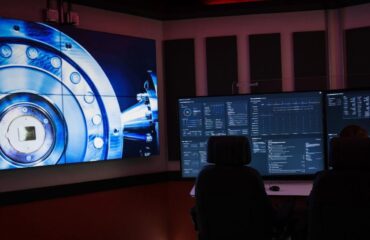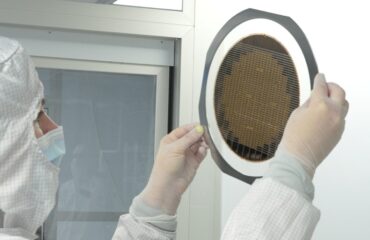Computing technology is on the brink of a revolutionary change. With prototypes already in operation, the quantum computer will deliver huge – possibly unlimited – increases in speed and accuracy to existing and new applications when the technology is available for widespread use.
Still in its infancy, the power of quantum computing technology is already being designed and used for applications in chemistry, medicine (particularly development of new drugs), transportation and logistics, finance, and military – as well as many other fields including machine learning that require the manipulation of probabilities. The technology attracts increasing and significant amounts of financing for research and development from private and public sector interests, and employs thousands across the globe with its high demand for specialized skills.
The quantum computer’s operation is fundamentally different from today’s computers, which is the reason for its vast increase in power. In today’s machines, information is transmitted in “bits” (short for ‘binary digits’) that are electrical signals in one of two possible states – either “1” (signal is on) or “0” (signal is off). The quantum computer uses the physics of quantum entanglement, which pairs two points across vast distance so that what happens to one instantly happens to the other. Entanglement allows the quantum machine to transmit signals that are simultaneously in both on and off states. This eliminates the time that our computer bits now require to switch from one state to the other, and could deliver potentially unlimited speed to the new technology.
Quantum computer signals are transmitted in “qubits”, which are far more complicated in their architecture and operation than present-day bits. Think of the structure of the bits in today’s computers as a straight line, running from 0 to 1 and back. Compare that to the qubit, which is a three-dimensional sphere in which signals distribute from three axes (labelled x, y, and z in the diagram) with equal effect at their maximums of both 0 and 1. The equality is called “superposition”, which allows quantum signals to be in two states, on and off, at the same time. Algorithms designed for qubits require complex mathematics and geometry, trigonometry, and advanced physics to maintain signal entanglement or “coherence”, which you can think of as the connection between entangled pairs of qubits.
The qubit is a sphere in which signals distribute from three axes labelled x, y, and z, at an angle denoted by φ, to a probability amplitude of Ψ.
Signal coherence is the main the main hurdle to overcome in the development of fully functional quantum computers. Qubits are extremely sensitive to the external environment and as a result typically have to be maintained in a super-cooled state, in complete isolation from radio signals, microwaves, temperature fluctuations, and all of the other physical phenomena that surround us. These requirements make the hardware very expensive, and even so there is currently a limit of approximately 100 qubits that can be connected before signals “decohere” or become “noisy”, with loss of fidelity and function when signals become scrambled.
Some predict the existing constraints of physics and cost that limit the availability of the technology will be overcome within a few years, particularly if materials science develops a stable medium in which qubits can operate at room temperature. Others forecast that a decade or more might be required to realize the goal.
Like much in the quantum realm in which these new computers will operate, we cannot be certain of either the timeline or the outcomes but we can take steps to prepare for the probabilities.
When will the revolution is unleashed, how will we manage it? What applications and technology will we develop with the speed and accuracy of the machine? How will privacy and encryption – already a very significant problem – be ensured when quantum signals are entangled? What national and international laws will require changes for the power of the technology, and what will the enforcement mechanisms be? What ethical standards will apply to guard against abuse of the machine’s speed and accuracy for personal advantage or destructive purposes, particularly during the initial phase when its high cost and specialized requirements will provide its power to a select few only?
With the time to widespread availability of the technology being unpredictable, but potentially within years, it would seem prudent to increase awareness and discussion of these and other questions now. Once the technology is perfected and the revolution is triggered, its speed will allow us little time to deal with problems later, especially if errors and unintended consequences begin to multiply at the same rate. And, of course, there is no time like the present to plan for all the benefits the new technology can deliver for a brighter future.




